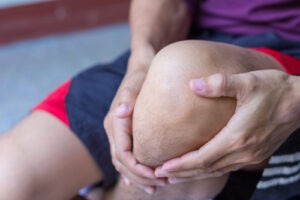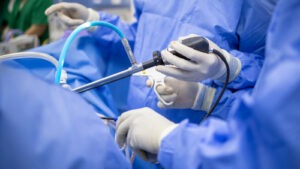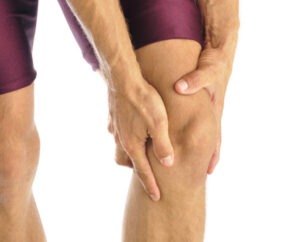 Shoulder orthopedic surgery is a vital solution for individuals experiencing chronic shoulder issues. The primary goal of these surgeries is to restore functionality, ease pain, and improve the overall quality of life. Chronic shoulder problems can arise from various sources, including sports injuries, arthritis, or degenerative conditions. Consulting an experienced orthopedic surgeon helps determine if surgical intervention is necessary and which type of procedure is most suitable.
Shoulder orthopedic surgery is a vital solution for individuals experiencing chronic shoulder issues. The primary goal of these surgeries is to restore functionality, ease pain, and improve the overall quality of life. Chronic shoulder problems can arise from various sources, including sports injuries, arthritis, or degenerative conditions. Consulting an experienced orthopedic surgeon helps determine if surgical intervention is necessary and which type of procedure is most suitable.
Understanding the different surgical options and the overall process can help patients feel more prepared. Common procedures include rotator cuff repair, shoulder replacement, and arthroscopy, each addressing specific issues within the shoulder joint. Before deciding on surgery, patients undergo thorough evaluations, including blood tests, imaging studies like X-rays or MRIs, and a comprehensive physical examination to assess overall health and specific shoulder conditions.
An open discussion with your orthopedic surgeon about the details of the procedure, potential risks, and expected outcomes is crucial. This ensures patients are well-informed and can mentally and physically prepare for the surgery. The surgical team, including the orthopedic surgeon, anesthesiologist, and nurses, work collaboratively to ensure a smooth and safe procedure. Various anesthesia options are available depending on the surgery and patient preference. The duration of these procedures typically ranges from one to three hours, emphasizing the importance of a skilled and coordinated surgical team. At the practice of Steven C. Thomas, MD and Donald W Pennington, DO, our board-certified surgeons specialize in orthopedic procedures in the Las Vegas area.
Varieties of Shoulder Surgical Procedures
There are several types of shoulder surgeries, each tailored to address specific conditions. Rotator cuff repair is a frequent procedure that involves reattaching the tendons of the rotator cuff to the bone, often recommended for patients with tears from overuse or injury. Another key option is shoulder replacement, suitable for those with severe arthritis or joint damage. This involves replacing the damaged parts of the shoulder with artificial components.
Arthroscopy is a less invasive technique that uses small incisions and a camera to address issues such as bone spurs, inflamed tissues, or loose bodies within the joint. It’s often chosen for its shorter recovery times and reduced surgical trauma. Another procedure is labral repair, which addresses tears in the cartilage around the shoulder socket, commonly resulting from dislocations or repetitive motion injuries.
Bankart repair is a specific type of labral repair that secures the labrum back to the shoulder socket to prevent recurring dislocations. Biceps tenodesis is another surgical method, used to reattach the biceps tendon to the humerus, alleviating pain caused by tendonitis or tears.
Your orthopedic surgeon will evaluate your condition and recommend the most appropriate surgical option. These surgeries aim to relieve pain, restore function, and improve the overall quality of life. Each procedure has unique benefits and recovery paths, making the consultation with your orthopedic surgeon critical in determining the best approach for your specific needs.
Preparations Before Surgery
Preparing for shoulder surgery involves several key steps to ensure a successful outcome. Initially, patients undergo pre-operative evaluations which may include blood tests, X-rays, MRIs, and a thorough physical examination. These assessments help the surgical team understand the patient’s overall health and specific shoulder condition. It’s important to have an open conversation with your orthopedic surgeon about the procedure details, potential risks, and expected outcomes. This discussion allows you to address any questions or concerns and helps in setting realistic expectations.
Patients are often advised to stop taking certain medications that can increase bleeding risk, such as blood thinners or specific over-the-counter drugs. Your surgeon will provide a detailed list of medications to avoid and any necessary adjustments to your current regimen. In some cases, you may be instructed to fast for a certain period before the surgery.
Arrangements for post-surgery care should also be made in advance. This might involve setting up a comfortable recovery space at home, arranging for transportation on the day of surgery, and enlisting help from family or friends for daily activities during the initial recovery period. Additionally, understanding the importance of rest and preparing for a period of limited mobility is crucial. By taking these preparatory steps seriously, patients can help ensure a smoother surgical experience and a more efficient recovery process.
What Occurs During the Surgical Procedure
The surgical procedure for shoulder orthopedic surgery begins with the administration of anesthesia. Patients may choose between general anesthesia, which induces complete unconsciousness, or regional anesthesia, which numbs only the shoulder area while keeping the patient awake. The choice of anesthesia depends on the specific surgery and the patient’s medical history.
Once anesthesia is effective, the orthopedic surgeon makes the necessary incisions to access the shoulder joint. For less invasive surgeries like arthroscopy, small incisions are made, and a camera is inserted to guide the procedure. For more complex surgeries, larger incisions may be required to access the damaged areas fully.
Throughout the surgery, the orthopedic surgeon works meticulously to repair or replace damaged structures. In the case of rotator cuff repairs, tendons are reattached to the bone. For shoulder replacements, damaged joint components are replaced with artificial parts. Specialized tools and techniques are used to ensure precision and minimize tissue damage.
The surgical team, which includes an anesthesiologist and nurses, supports the orthopedic surgeon by monitoring the patient’s vital signs and assisting with the surgical instruments. The entire team works in a coordinated manner to ensure the procedure is performed safely and efficiently.
After the necessary repairs or replacements are completed, the incisions are closed using sutures or staples. Dressings are applied to protect the surgical site and minimize the risk of infection. The patient is then moved to the recovery area for post-operative monitoring until they regain full consciousness or sensation, depending on the type of anesthesia used.
Recovery Process After Surgery
Recovery from shoulder surgery varies depending on the specific procedure and the patient’s individual healing process. Initially, patients might need to wear a sling to keep the shoulder immobilized and allow for proper healing. Physical therapy typically starts a few weeks post-surgery to gradually restore mobility and strength. The therapist will guide patients through tailored exercises designed to improve flexibility and functionality. Adhering to the prescribed rehabilitation program is crucial for optimal recovery. Regular follow-up appointments with the orthopedic surgeon will help monitor progress and address any complications early on. Pain management is also a key component, with medications and other therapies used to alleviate discomfort. Recovery timelines can differ, but a commitment to rehabilitation significantly influences the outcome.
Coping with Pain and Discomfort
Managing pain and discomfort is crucial following shoulder surgery. Pain management typically involves a combination of medications and physical therapies. Your healthcare provider may prescribe nonsteroidal anti-inflammatory drugs (NSAIDs) to reduce inflammation and alleviate pain. In some cases, stronger medications like opioids might be necessary, but these are usually prescribed for short-term use due to their potential for dependency.
Beyond medications, various non-pharmacological methods can help manage pain. Ice packs applied to the shoulder can reduce swelling and numb the area, providing relief. It’s important to apply ice in intervals, such as 20 minutes on and 20 minutes off, to avoid frostbite and skin damage. Resting the shoulder and avoiding strenuous activities also contribute significantly to pain reduction.
Gentle exercises and physical therapy are integral parts of the recovery process. While it’s essential to allow the shoulder to heal, gradually introducing movement helps prevent stiffness and promotes long-term functionality. Your physical therapist will guide you through specific exercises tailored to your recovery stage, ensuring that you don’t overexert the healing tissues.
Using supportive devices like slings can also help immobilize the shoulder, reducing pain and facilitating recovery. Ensuring proper use of these devices as instructed by your healthcare provider is vital.
Additionally, some patients find relief through alternative therapies such as acupuncture or massage, though these should be discussed with and approved by your orthopedic surgeon to ensure they are safe and appropriate for your condition.
It’s essential to maintain open communication with your healthcare team throughout the recovery process. They can adjust pain management strategies as needed and provide guidance to ensure the best possible outcomes.
Long-term Care and Outcomes
Maintaining shoulder health after surgery involves adhering to a tailored rehabilitation program and making lifestyle adjustments to protect the shoulder from further injury. Engaging in recommended physical therapy exercises is crucial for restoring strength and flexibility. It’s also important to avoid activities that could stress the shoulder joint during the recovery phase.
Regular follow-up visits with your orthopedic surgeon will help monitor your progress and make any necessary adjustments to your treatment plan. These check-ups are essential for catching any potential issues early and ensuring that your shoulder is healing correctly.
In addition to physical therapy, maintaining a healthy lifestyle that includes proper nutrition and regular exercise can support overall recovery. Staying hydrated and consuming foods rich in vitamins and minerals will aid in tissue repair and general well-being.
Using ergonomic tools and techniques at work or during daily activities can help minimize strain on the shoulder. It’s essential to incorporate these practices to prevent re-injury and promote long-term health.
By closely following your orthopedic surgeon’s advice and actively participating in your recovery, you can achieve optimal outcomes and enjoy an improved quality of life.
Contact Surgeons Dr. Thomas, Dr. Pennington, and Dr. Limtong at the Knee and Shoulder Institute in Las Vegas, NV to Schedule an Appointment:
If you would like to schedule an appointment or learn more about the Knee and Shoulder Institute procedures & treatments,contact the office today click here.
Serving patients from and around greater Las Vegas, Lake Havasu, Bullhead City, Mesquite, Pahrump, Nevada





 Choosing the right
Choosing the right  The
The 
